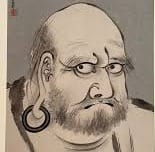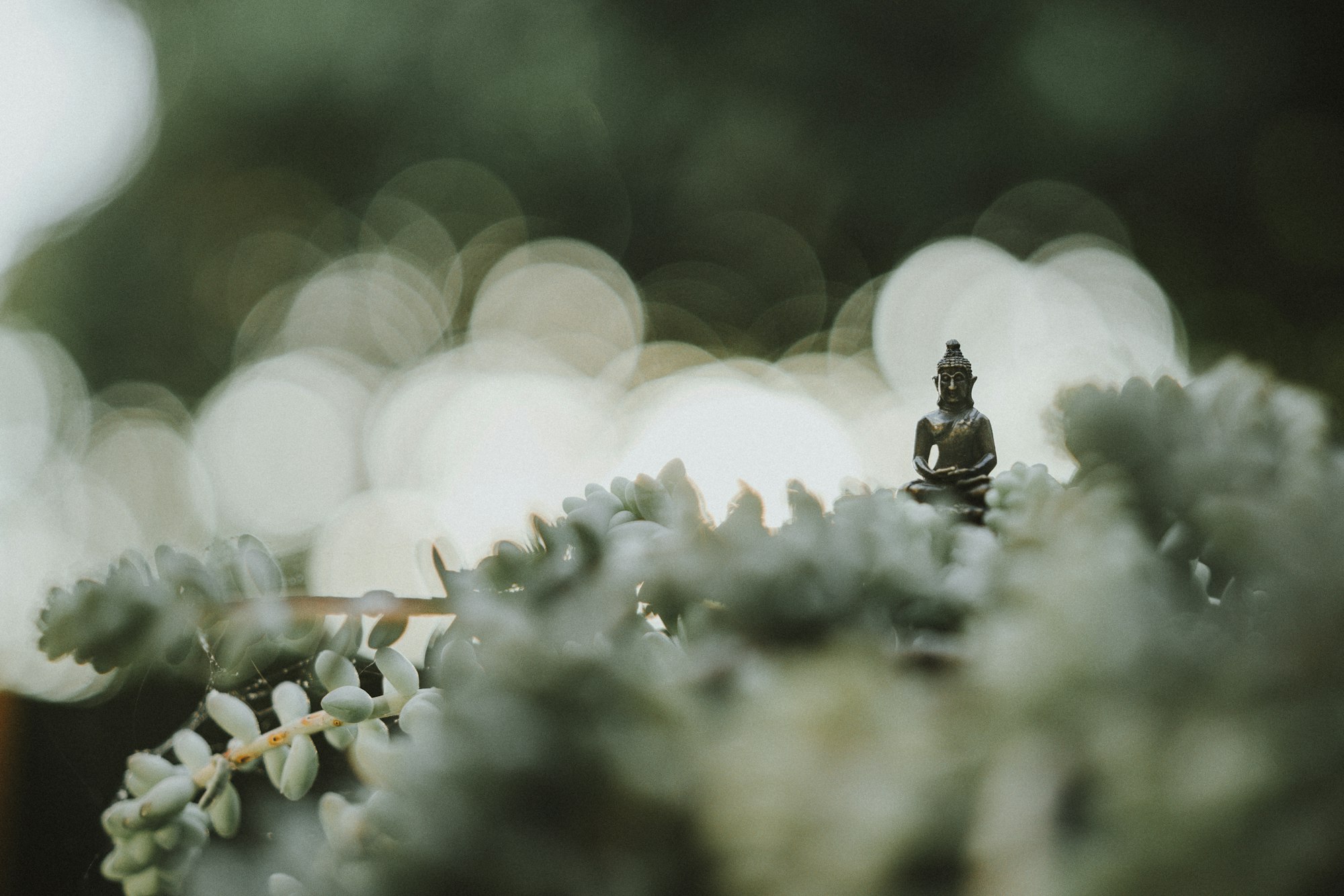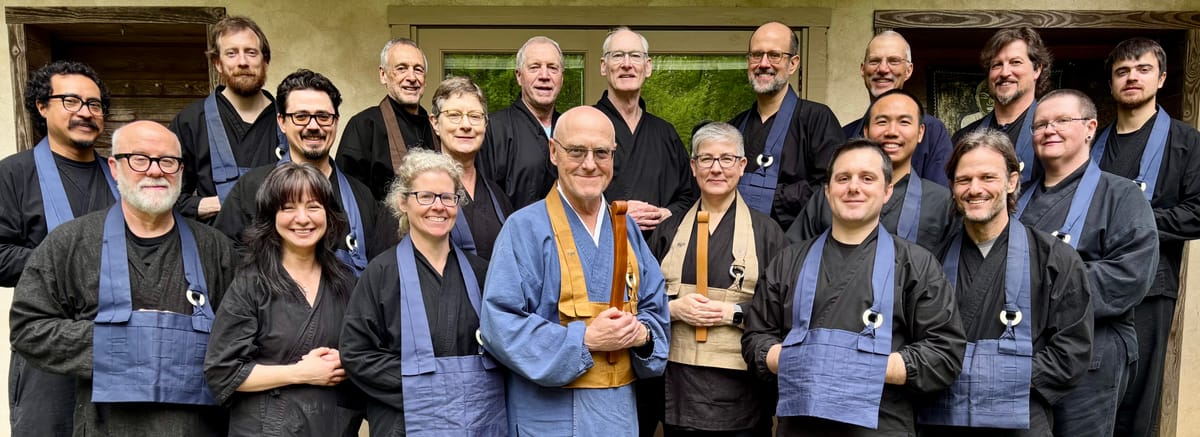"How Much Zazen Should I Do?"
No offense intended, but from what we've seen, probably a lot more than you are now doing.

What is zazen and how much does one need to do it?
The first point has been subject to controversy for years, including in online discussions, while the second question has been largely ignored, and yet it is a key point for householders. Proponents of both sides of the controversy about what zazen is (when they're not off-gassing about their own opinions) often turn to recognized authorities to support their views. Regarding the first question, Dogen (1200-1253) is regularly cited as someone who advocated for something called "just sitting" (shikantaza), and a typical response to the second question is – "just a little is enough."
Proponents of the other side of the controversy sometimes cite Hakuin (1686-1769) as their authority and argue for contrary views. That is, zazen is about working with koans and that we should sit a lot, although what "a lot" means is not often specified. Granted, the issues around zazen are more complicated than this, but this simplistic framing will provide a lens through which to examine some important points about the buddhadharma. So we ask you for a temporary suspension of judgement.
And speaking of judgement, despite how we've framed the issue above, from what we've been seeing recently in popular versions of Zen in the West, we seem to be drifting to a dumbed-down coalescence around "nonjudgemental awareness" and "accepting your life as it is." If "nonjudgemental awareness" and "accepting your life as it is" were what Bodhidharma (late 5th-early 6th centuries) had to offer, he certainly would not have bothered to come to China as a centurion, and instead would have died an obscure death in India.
Nevertheless, because Dogen is often cited as support for those who advocate for shikantaza and "just a little is enough," as well as for the emerging diminished version of Zen, we want to again examine what Dogen actually taught and share some about the context for those teachings.

In this post, another iteration of a theme we've written about previously, we'll address only the second issue – how much zazen is enough? And we'll get to the first question (again) in a future post. For now, we'll just say this: the first question could be phrased like this: what should we be doing in the inner form of zazen, especially if we want to awaken and verify awakening?
Another way to put the second question is this: how much time should a practitioner spend in the outer form of zazen? That is, how much should one sit in the formal pose of zazen?
Note that the amount of zazen that one does is not a sufficient condition for awakening. For most cases, however, some generous amount of zazen is a necessary condition. "Condition" for what? Yes, we'll get to that promptly.
And some might object to our pairing of zazen and awakening, saying, "Some people who don't sit at all have awakening experiences."
Sure, and some people, without working a day in their lives, win the $900,000,000 Megamillion lottery. In any case, the buddhadharma doesn't rely on such random events. That'd be like the farmer who one day saw a rabbit run into a stump and die. The farmer enjoyed rabbit for dinner. Thereafter, he stood in the same spot in his field, waiting for another rabbit to suicide-by-stump.
Shakyamuni Buddha said that if a practice wasn't efficacious, it was not the buddhadharma.
Now a warning
Doing zazen more than an hour a day will likely lead to many things, including mild adverse effects both physically and psychologically. Although severe effects are rare, you don't get to realize the secrets of the universe at no risk and no cost. See here for more (strangely, one of our most popular posts ever):

How much is enough?
That depends on several factors, including:
- What is your intention? Or, enough for what? That is, do you practice zazen for a bit of peace and calm (well-being), or to awaken (kensho), integrate awakening, and liberate beings?
- Are you a monastic or a householder? And if you are a householder, what is your lifestyle? That is, do you have a spouse, children, aging parents, and/or a full-time job, etc.?
- What is your physical and psychological capacity?
It is essential to explore these questions with an authentic Zen teacher with whom you are in a teacher-student relationship. We use the word "authentic" with some trepidation, but in our times, there are many people who have received dharma transmission, use a title like "Roshi," and who have done little training, let alone awakened. Some may be authentically sincere people, but not necessarily authentically realized Zen teachers. Many are even "awakening-deniers." So, Zen students, be aware; don't be deceived by others.
In what follows, we'll provide you with general guidelines for how much to sit and some historical context. But, again, find an authentic Zen teacher (if you're not in such a relationship now) and determine how much zazen is fitting together. Then follow through.
Now, about your intention
If you are doing zazen in order to find some peace and calm (the vast majority of people who practice meditation these days), whether just for yourself or to support your social justice activities, then do it as much as you like. You do you, as they say, and pay attention to how that's working.
If your intention is to awaken, then it's important to notice that your personal likes and dislikes are not helpful or even relevant – indeed, they're largely what obscures awakening. In that case, in order to awaken, follow your teachers' instructions and look beyond yourself to the examples of practitioners in the past who awakened.
For more on this general perspective, see:

One thing that stands out from the historical record is that monastic and householder bodhisattva practitioners understood the painful fact that the world was a near, if not total, shit-show, and unless we thoroughly awaken so we can function freely with great compassion, whatever we do to "help" may become part of the problem (and that's one of the most difficult things about aspiring-bodhisattva work; i.e., you feel the pain of the world, but know that the essential problem [aka, greed, anger, and ignorance] can't be resolved at the political or social-welfare level).
So how much zazen did great practitioners of the past do?
As we've pointed out here before, one source for information about how much zazen is enough is from the monastic rules (aka, vinaya) that were followed through the classical period of Zen in China (i.e., the later Tang-Song dynasties, 700-1279, at least). According to the vinaya, practitioners sat about eight hours a day throughout the year. That's like doing a 365-day sesshin! It is not a coincidence or a random occurrence that there were so many great practitioners in the classical period. Great masters were produced by doing the work.
Monastics in all schools of Buddhism would have followed roughly this same program, including members of all the various Zen lineages, like those practitioners who led to the Japanese Rinzai and Soto lines. Indeed, when Dogen returned from his pilgrimage to China, he came back with biting criticism of Buddhism in Japan, largely because this amount of zazen was not being practiced anywhere on the island (in Dogen's view). Much of his teaching can be seen to be just about the amount of outer zazen, let alone what should be happening in inner zazen.
See his Talk on Pursuing the Way (Bendowa) for much more on this. Here is one passage from this text where he highlights the importance of zazen:
The issue becomes – how much should I disport myself freely and express the samadhi of receiving and using the self? However, note that this is not a belief or a cognitive reframe. It is "verifying unsurpassed awakening." You just can't get much clearer than that.
So how much zazen did Dogen include in the daily schedules for his monastics at the monasteries he founded, Koshoji and Eiheiji? As far as we know, this is unknown. However, we do have a detailed schedule of the monastic day from Daichi Sokei (1290-1366), who trained with Dogen's disciple, Kangan Giin, and also Keizan Jokin, and received transmission from Meiho Sotetsu. Daichi also spent eleven years in China. So Daichi was not only close to Dogen, both temporally and spatially, but he's got a pretty strong-looking dharma resume!
Daichi's schedule had about nine-hours of daily zazen, not including a two-hour block for night sitting (yaza). The point might be obvious, but we'll still make it: If "nonjudgemental awareness" and "accepting your life as it is" were truly what the buddhadharma was about for Daichi and by extension, Dogen, they certainly would not have been sitting nine hours a day.
Given that few householders could find time to sit nine hours a day, what about for them? For us? What does the historical record show about the amount of zazen that householders did who woke up? Dogen, and other teachers through the classical period, lauded those awakened householders who joined in the monastic schedule for as much as their responsibilities allowed.
In one piece where Dogen talks directly to householders about how to do Zen (Eihei koroku V8.14), he doesn't even mention zazen. His main themes for householder practice include:
● the importance of finding an authentic teacher and the dangers of a false teacher
● the importance of working closely with and serving a teacher
● taking up a keyword and breaking through
● then integrating that breakthrough
For more about this, see:

Dogen's message for householders seems to be this: sit as much as possible. But apart from that, we don't know how much zazen householders who awakened under Dogen's guidance were doing.
The "sit as much as possible" standard was what we used in our early teaching years. We found, though, that "as much as possible" was too vague for most students, and that it didn't provide them with sufficiently clear instructions or standards with which to work their edges. In other words, "as much as possible" allowed for too much wiggle room.
Now, we are clear. Vine students sit one hour a day as a minimum. We've found that most students need at least that much zazen to even tread water. We recommend two hours a day (or more), depending on the student's circumstances, because that's what we've seen as necessary, especially for kensho. That much zazen is even more important for post-kensho training.
If you want to be a part of a Zen training group for householders that supports this kind of wild zazen, see this:

"But how much zazen should I do?"
No offense intended, but from what we've seen, probably a lot more than you are now doing. Thirty minutes is 2% of your day. In order to discover the delicate, subtle balance-point of equipoise and vividly turn the light around, most people require a lot more zazen than that. If you sit thirty minutes a day, even if you do a couple seven-day sesshin a year, and have some powerful insights, and even if your experience is verified as a kensho, it is unlikely that the kensho will go deep enough to be transformative. That is a truth that is seldom recognized in the Zen scene these days.
As we've pointed out above, our dharma ancestors sat about 38% of their day. Do you think with a 2% effort that you are 19 times more dharmically gifted than they were?
Probably not.
Someone might ask, "Okay, a lot more than I'm doing now, but what's 'a lot?'"
Two hours is a good general guideline. And, like we said, consult with your teacher. If you're not in a teacher-student relationship now, get in touch with us (or another teacher, like Meido Moore Roshi, that supports this level of practice).
Also, finally, note that the notion that Dogen's teaching and practice support the assertion that "just a little is enough" is utter nonsense (i.e., it is unsupported by the historical record, as well as what he himself wrote). For example (and for closure):
Comments and questions are welcome.
Coming soon here at Vine of Obstacles Zen
Paid subscribers will receive an invitation on Thursday, Nov 13, 2025, for our dharma talk this coming Sunday, Nov 16, 2025. We'll be exploring the inner practice of zazen. And this week we'll also be sending an invitation to paid subscribers for our Day of Retreat on Sunday, Nov 23, 2005.
And at Shake Out Your Sleeves and Go
On the Transparency of Self and Process: An Interview with Michael Kieran
My interview with Michael Kieran, the primary teacher at the Palolo Zen Center, long-time student of Robert Aitken Roshi, and successor of Nelson Foster, will be posted on about November 12, 2025. Subscribe and you’ll be notified when it goes up.




